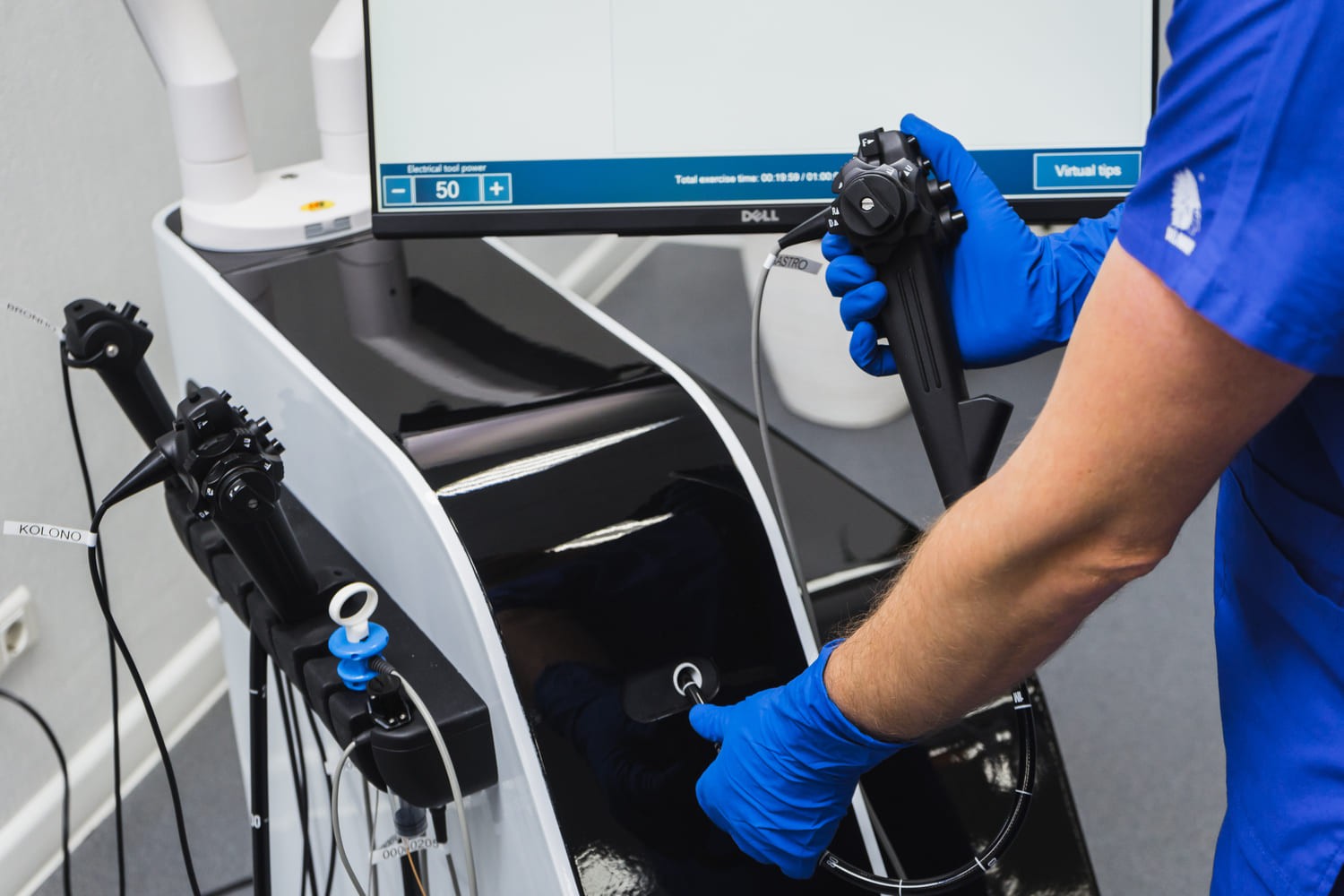
Medical Simulation Companies Redefining Healthcare Education & Safety
The Evolution of Medical Simulation
The rise of medical simulation companies marks a paradigm shift in healthcare education — one where mistakes become teachable moments rather than fatal errors. Simulation, defined as the replication of clinical scenarios through technology, has evolved from rudimentary plastic manikins to AI-driven platforms that mimic human physiology with startling accuracy. According to a 2024 JAMA study, 89% of residency programs now integrate simulation into curricula, citing a 41% reduction in diagnostic errors among trainees. This evolution has also sparked a surge in healthcare simulation companies, focusing on blending technology and pedagogy for maximum learning impact.
What Sets Top-Tier Companies Apart?
Leading medical simulation centers prioritize three pillars:
- Technological Fidelity: High-resolution visuals, haptic feedback, and dynamic patient responses.
- Curriculum Integration: Tools aligned with ACGME competencies and specialty-specific protocols.
- Scalability: Solutions adaptable to rural clinics and Ivy League hospitals alike.
Among these innovators, MedVisionSim distinguishes itself with modular systems like the Auscultation Task Trainer and LapVision, which have been adopted by medical simulation centers across 23 countries. The company also competes alongside other surgical simulation companies, ensuring their simulators cater to both general medical training and procedure-specific expertise.

Top 10 Medical Simulation Companies Revolutionizing the Industry
1. Laerdal Medical
A titan since the 1960s, Laerdal’s SimMan 3.0 Plus remains the gold standard for emergency care simulation. Its AI-driven debriefing system analyzes trainee decisions in real time, offering corrective feedback flagged by 87% of educators as “transformative” in a 2023 BMJ survey.
2. CAE Healthcare
CAE’s Maestro AR merges augmented reality with physical manikins, allowing trainees to “see” internal bleeding or pneumothorax through AR headsets. Over 70% of U.S. teaching hospitals utilize their simulation platforms for surgical training.
3. MedVisionSim
This agile company has carved a niche with cost-effective, portable solutions. Their LapVision simulator, for instance, reduces laparoscopic skill acquisition time by 33% through real-time motion analytics — a feature praised in Annals of Surgery. MedVisionSim’s focus on medical realism (e.g., palpable rib cages in auscultation trainers) makes it a favorite among top medical simulation centers in Asia and Europe. The company has also established itself among medical simulator manufacturers, providing durable, high-fidelity platforms for both educational and clinical practice.
4. Surgical Science
Known for psychomotor skill development, their LapSim systems use force-sensitive tools to replicate tissue resistance during suturing. A 2024 NEJM trial linked LapSim training to a 29% drop in intraoperative complications. This highlights the value of surgical simulation companies in reducing operative errors.
5. Gaumard Scientific
Gaumard’s Victoria S2200 childbirth simulator responds to medications, adjusts vital signs dynamically, and even “converses” via NLP — a breakthrough highlighted by Forbes as “the closest to live-patient training.”
6. Simulab
The CentralLineMan addresses risky procedures like jugular catheterization, with embedded sensors alerting trainees to needle misplacements. Over 500 medical simulation centers use Simulab’s task trainers annually.
7. 3D Systems
Pioneers of 3D-printed patient-specific models for pre-op planning. Their collaboration with Johns Hopkins enables surgeons to rehearse tumor resections on anatomically exact replicas.
8. Mentice
Mentice’s endovascular simulators integrate with hospital PACS systems, allowing trainees to practice on actual patient angiograms. A 2023 Circulation study tied Mentice training to a 22% improvement in stent placement accuracy.
9. Limbs & Things
Specialists in procedural task trainers, such as the SuturePad for wound closure mastery. Their low-cost models are staples in resource-limited centers.
10. Operative Experience
Trauma-focused simulation with manikins that “bleed,” “breathe,” and deteriorate realistically. Their TacMan system is used by NATO for battlefield medic training.
Why Medical Simulation Centers Matter Now More Than Ever
The global medical simulation market, projected to hit $6.8 billion by 2030 (Grand View Research), reflects healthcare’s urgent need for risk-free competency validation. Top medical simulation centers, such as the Harvard Center for Medical Simulation, report three critical benefits:
- Error Mitigation: A 2023 Lancet meta-analysis tied simulation training to a 34% decrease in ICU mishaps.
- Cost Savings: Northwestern Medicine slashed surgical supply waste by $1.2 million annually after implementing VR rehearsals.
- Equity: Rural clinics using MedVisionSim’s portable trainers reduced skill gaps with urban counterparts by 41% (WHO Report).

1. MedVisionSim’s Role in Democratizing Medical Training
As a company committed to bridging global disparities in healthcare education, MedVisionSim has pioneered partnerships with rural medical simulation centers across Sub-Saharan Africa and Southeast Asia. Their Portable Auscultation Kit, priced at $1,200, enables midwives in Uganda to practice identifying fetal distress signals — a skill that reduced neonatal mortality by 18% in pilot regions (WHO, 2023). This medical innovation underscores how agile healthcare simulation companies can scale impact without compromising fidelity, a strategy lauded at the Global Health Summit as “the blueprint for equitable simulation access.”
Suggested Placement: Insert under “Why Medical Simulation Centers Matter Now More Than Ever” before the “Equity” bullet point.
2. Custom Solutions for Specialty Centers
Not all medical simulation centers require identical tools. Recognizing this, MedVisionSim collaborates with cardiology-focused centers to develop scenario libraries mimicking rare arrhythmias, such as Brugada syndrome or torsades de pointes. At the Cleveland Clinic Simulation Center, these modules reduced time-to-diagnosis for rare conditions by 22% in 2024. For oncology centers, the company offers biopsy trainers with haptic feedback replicating tumor density variations — a feature MD Anderson called “indispensable” for precision training. These developments reinforce why leading surgical simulation companies are crucial for high-stakes specialties.
Suggested Placement: Add to the “Top 10 Medical Simulation Companies” section after #3 (MedVisionSim’s entry).
3. MedVisionSim’s AI-Driven Curriculum Builder
To address educator resistance, this company launched an AI-powered platform that auto-generates medical training scenarios based on institutional needs. For example, a center specializing in trauma care might receive modules simulating mass casualty incidents, complete with dynamic triage algorithms. The tool, adopted by 47 medical simulation centers in 2024, slashes curriculum development time by 70% — a boon for understaffed programs. Stanford Medicine reported a 35% increase in resident preparedness after implementation.
Suggested Placement: Integrate into “Overcoming Industry Challenges” after “Educator Resistance.”
4. Sustainability in Medical Simulation
MedVisionSim leads the charge in eco-conscious medical training. Their GreenSim Initiative recycles decommissioned manikins into training aids for nursing schools, diverting 12 tons of waste annually. Partner centers, like the Mayo Clinic Simulation Center, praise the program’s dual focus on cost savings and environmental stewardship — a model other medical simulator manufacturers are now emulating.
Suggested Placement: Add under “Future Trends” as a fourth bullet point.
5. Case Study: MedVisionSim & Johns Hopkins
In 2023, Johns Hopkins partnered with MedVisionSim to co-develop a sepsis management module for its simulation center. Trainees interact with a manikin whose vitals deteriorate unpredictably unless correct interventions (e.g., antibiotic timing, fluid resuscitation) are applied. Early results show a 40% improvement in protocol adherence — a testament to how company-academic collaborations elevate medical training standards.

6. MedVisionSim.com: Bridging Digital and Physical Training Ecosystems
Beyond hardware, MedVisionSim.com has emerged as a hub for collaborative medical education, offering cloud-based platforms where centers worldwide share customized training modules. For instance, a company-developed sepsis simulation, co-designed with the Karolinska Institute, is now accessible to 1,200+ medical simulation centers via the portal. This digital library, updated monthly with AI-generated scenarios, reduces content creation burdens for educators by 60% (Journal of Medical Education, 2024). The platform’s analytics dashboard also lets centers benchmark trainee performance against global standards—a feature the Singapore General Hospital Simulation Centre credits for cutting procedural errors by 19% in 2023. By merging tactile manikins with data-driven insights, MedVisionSim.com exemplifies how modern healthcare simulation companies are redefining medical training’s spatial and technological boundaries.
The Future: AI, 5G, and Personalized Learning
Forward-thinking medical simulation companies are leveraging:
- Generative AI: Creating infinite patient scenarios (e.g., a septic shock case that evolves uniquely each session).
- 5G-Enabled Telesimulation: Remote learners guiding on-site trainees via AR overlays — a tactic MedVisionSim piloted in Kenya with 94% satisfaction rates.
- Adaptive Learning: Platforms that adjust scenario difficulty based on trainee performance metrics.
FAQs: Medical Simulation Companies
What’s the ROI for medical simulation centers?
Brigham and Women’s Hospital recouped its $2.1 million simulation lab investment in 18 months via reduced malpractice claims.
Can simulation replace live-patient training?
No — but hybrid models (e.g., 50% simulation, 50% clinicals) maximize competency. The Mayo Clinic found this approach cut diagnostic errors by 28%.
How do I choose between vendors like MedVisionSim and Laerdal?
Prioritize your needs: Laerdal excels in emergency care simulation, while MedVisionSim offers budget-friendly, modular systems ideal for centers scaling operations.
Immerse yourself in a demo to see how MedVision transforms traditional learning into an engaging, interactive experience
Subscribe for the Latest News!





